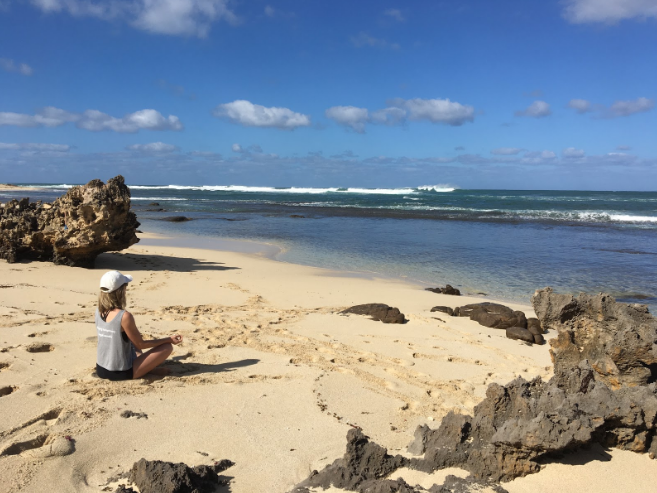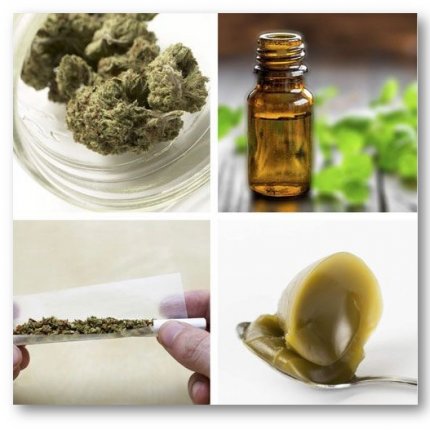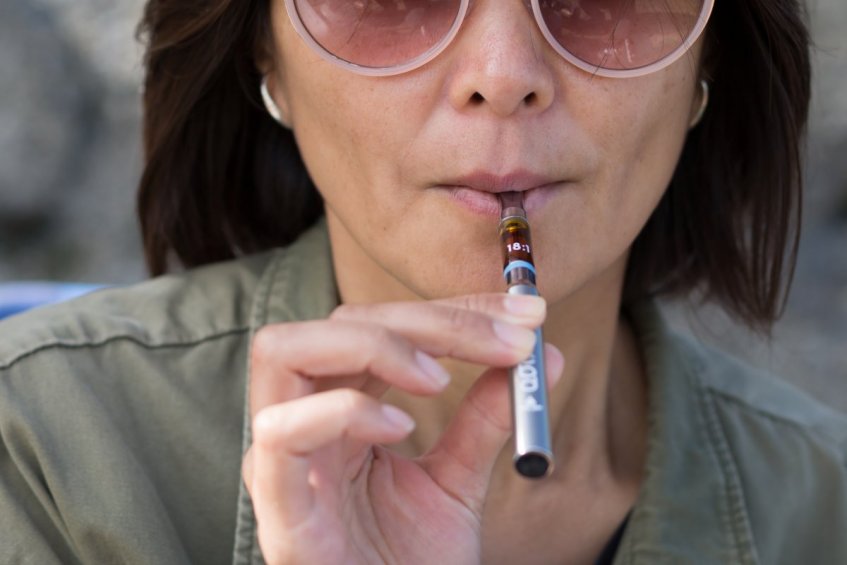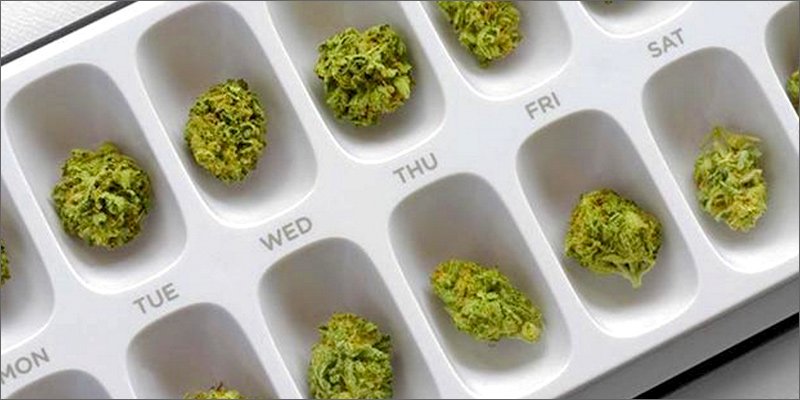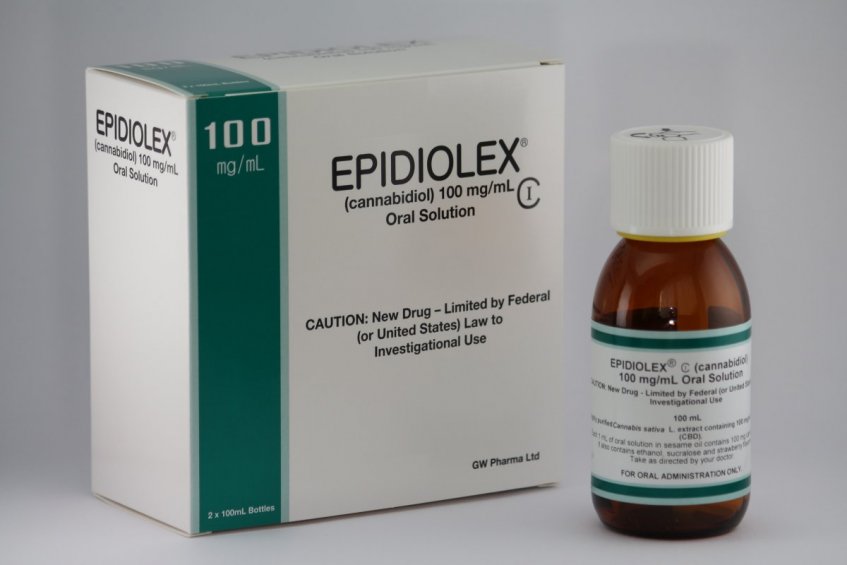CANNABIS DOSING CONUNDRUM
High dose? Low dose? CBD? THC? Optimizing one’s therapeutic use of cannabis may entail some experimentation. In essence, the goal is to administer consistent, measurable doses of a CBD-rich cannabis remedy with as much THC as a person is comfortable with.
Highlights:
Cannabis can be effective therapeutically at a wide range of doses. There’s no standard dosage that’s right for everyone. Here are some do’s and don’ts for dosing cannabis:
- The successful use of cannabis as a medicine depends on managing its psychoactive properties. Many people enjoy the cannabis high; others do not. A person’s sensitivity to THC (“The High Causer”) is key to implementing an effective treatment regimen.
- One does not need to smoke marijuana or get high to benefit from medical cannabis.
- CBD is not psychoactive like THC. High doses of CBD-rich formulations are safe, well tolerated, and sometimes necessary.
- But high doses of CBD are not always more effective than lower doses. As little as 2.5 mg CBDcombined with a small amount of THC can have a therapeutic effect.
- Preclinical studies have shown that full-spectrum CBD-rich cannabis oil (with a small amount of THC) is efficacious at much lower doses and has a much wider therapeutic window than pure, pharmaceutical-grade CBD.
- Less is more: Cancer patients who received 21 mg/day of Sativex (a cannabis sublingual spray with roughly equal amounts of CBD and THC) experienced significant reductions in pain, more so than cancer patients who received 52 mg of Sativex, while those who were given 83 mg of Sativex reduced their pain no better than a placebo.
- Cautious titration is recommended when ingesting THC-rich cannabis products (with little CBD). Microdosing as little as 2.5 mg THC can provide symptom relief without making a person feel high. If well tolerated, consider increasing the amount of THC to a total of 15 mg divided equally throughout the day.
- Cumulative doses of THC exceeding 20-30 mg per day – or a single dose of 10 mg or more – may cause unwanted side effects.
- For cannabis-naïve patients, it may be best to start with low doses of a CBD-rich remedy with little THC and slowly increase the dosage – and, if necessary, the amount of THC – one step at a time. Take a few small doses over the course of the day, rather than one big dose.
Figuring out the optimal dose of cannabis may involve some trial and error. A balanced ratio of CBDand THC could have a greater therapeutic impact than either CBD or THC alone. Adjust the amount of CBD and THC until you find the sweet spot with the right combination of both compounds. In essence, the goal is to administer consistent, measurable doses of a CBD-rich cannabis remedy with as much THC as a person is comfortable with.
It’s relatively easy to experience medical benefits from cannabis. A puff or two of a resin-rich reefer can do the trick for a lot of people.
But smoking marijuana is not the be-all and end-all of cannabis therapeutics. One doesn’t have to smoke marijuana or get high to experience the medical benefits of cannabis.
In recent years, the advent of potent cannabis oil concentrates, non-psychotropic CBD product options, and innovative, smokeless delivery systems have transformed the therapeutic landscape and changed the national conversation about cannabis.
It’s no longer a question whether marijuana has medical value. Now it’s about figuring out how to optimize one’s therapeutic use of cannabis.
That can be a challenge – for doctors as well as patients. Most physicians never learned about cannabis in medical school and, according to a 2017 survey, few feel they are qualified to counsel patients about dosage, CBD:THC ratios, different modes of administration, and potential side effects.
“Dosing cannabis is unlike any therapeutic agent to which I was exposed in my medical training,” says Dustin Sulak, D.O., the director of
Integr8 Health, which serves patients at offices in Maine and Massachusetts. “Some patients effectively use tiny amounts of cannabis, while others use incredibly high doses. I’ve seen adult patients achieve therapeutic effects at 1 mg of total cannabinoids daily, while others consume over 2000 mgs daily without adverse effects.”
Cannabis comes in many different forms with a wide range of potencies, and its production and distribution have yet to be standardized in states where cannabis is legal for therapeutic use. So what’s the best way to proceed when it seems like cannabis dosing is all over the map?
Managing psychoactivity
The successful use of cannabis as a medicine depends to a great extent on managing its psychoactive properties. Many people enjoy the cannabis high; for others it’s unpleasant. A person’s sensitivity to tetrahydrocannabinol (THC), the main psychoactive component of cannabis, is key to implementing an effective treatment regimen.
Cannabidiol (CBD) does not cause a psychoactive high like THC. CBD can actually lessen or neutralize the THChigh, depending on how much of each compound is present in a particular product. A greater ratio of CBD-to-THC means less of high. Today cannabis patients have the option of healing without the high.
Broadly speaking, there are three types of resin-rich cannabis (and cannabis products):
- Type 1 (THC-dominant) – High THC, low CBD (ubiquitous psychoactive marijuana varietals that millions like to smoke)
- Type 2 (THC & CBD) – Mixed THC and CBD cultivars (psychoactive, but not as edgy as THC-dominant varietals)
- Type 3 (CBD-dominant) – High CBD, low THC (non-euphoric marijuana or hemp)
There’s also a fourth type – those rare cannabis cultivars that prominently express a so-called minor cannabinoid (like CBG or THCV). But in terms of what’s currently available for patients, the THC:CBD ratio is paramount and must be considered when formulating dosage strategies.
What’s the appropriate dosage for each of the three main types of cannabis?
Microdosing for beginners
One of the common misconceptions about cannabis therapy is that one has to get high to attain symptom relief.
“Most people are surprised to learn that the therapeutic effects of cannabis can be achieved at dosages lower than those required to produce euphoria or impairment,” says Dr. Sulak, who asserts that “ultra-low doses can be extremely effective, sometimes even more so than the other [high-dose] extreme.”
Preclinical science lends credence to the notion that a small amount of THC can confer health benefits. Oral administration of a low dose of THC (1 mg/day) resulted in “significant inhibition of disease progression” in an animal model of atherosclerosis (hardening of the arteries), according to a 2005 report in
Nature, which noted: “This effective dose is lower than the dose usually associated with psychotropic effects of THC.”
Because of federal cannabis prohibition and consequent research restrictions, clinical data is lacking to determine if low dose THC therapy can protect against atherosclerosis in humans. But this much is certain: The practice of micro-dosing – which entails the consumption of a sub-psychoactive or slightly psychoactive dose of cannabis – is gaining popularity among those who want the medical benefits of cannabis without the buzz.
Although banned by federal law, measurable doses of cannabis medicine are currently accessible in the form of concentrated oil extracts, infused sublingual sprays, tinctures, edibles, gel caps, topical salves and other products.
“Start low, go slow”
The adage “start low and go slow” is apropos for cannabis therapy, in general, and THC titration, in particular, as discussed by Caroline MacCallum and Ethan Russo in a January 2018 article in the
European Journal of Internal Medicine. The authors, who are both physicians, provide sensible guidelines for health professionals and patients regarding the judicious administration of (Type 1) THC-dominant medicinal preparations.
If a new patient is going to smoke or vape THC-rich cannabis, Russo and MacCallum suggest they start with a single inhalation and wait 15 minutes before inhaling again. The effects of inhaled cannabis usually can be felt within a few minutes, thereby providing quick relief of acute distress. If need be, one can inhale an additional puff every 15 to 30 minutes “until desired symptom control is achieved.”
As for oral administration, one should keep in mind that it can take 60 to 90 minutes before the effects of a single dose are felt.
MacCallum and Russo suggest a carefully titrated regimen for consumption of ingestible THC-rich cannabis products. They recommend that patients with little or no experience using cannabis should start by ingesting the equivalent of 1.25 to 2.5 mg of THC shortly before bedtime for two days. If there are no unwanted side effects, increase the bedtime dose of THC by another 1.25 to 2.5 mg for the next two days. Continue to increase the dose of THC by an additional 1.25 to 2.5 mg every other day until the desired effects are achieved.
If there are adverse side effects, reduce the dose of THC to the prior amount that was well tolerated.
Type 1 – Titrating THC
For adequate symptom relief, some patients may need to ingest a cannabis preparation two or three times during daylight hours in addition to their night-time regimen. Again, cautious titration is urged: On days 1 and 2, start with one dose of the equivalent of 2.5 mg THC; on days 3 and 4, increase to 2.5 mg THC twice a day; and, if well tolerated, up the dose incrementally to a total of 15 mg THC (divided equally throughout the day).
“Doses exceeding 20-30 mg/day [of THC] may increase adverse events or induce tolerance without improving efficacy,” the authors warn.
Adverse events mainly pertain to THC and are dose-dependent. Very high doses are more likely to cause unwanted side effects.
For most medications, a higher dose will pack a stronger therapeutic punch. With cannabis, however, it’s not so simple. THC and other cannabis components have biphasic properties, meaning that low and high doses generate opposite effects. Small doses of cannabis tend to stimulate; large doses sedate.
In practical terms, this means that starting low and gradually upping the dose of cannabis will produce stronger effects at first. But, after a certain point, which differs for each person, “dosage increases can result in weaker therapeutic effects,” according to Dr. Sulak, “and an increase in side effects.”
Sulak observes that “symptoms of cannabis overdose closely mirror the symptoms one would expect cannabis to relieve at appropriate doses: nausea, vomiting, diarrhea, sweating, spasms, tremors, anxiety, panic attacks, paranoia, dis-coordination, and disturbed sleep. Extreme overdoses can lead to hallucinations and even acute psychosis.”
Type 2 - THC and CBD: Power couple
Although many patients do well at the lowest effective dose, some benefit more from a high dose cannabis oil regimen, preferably one that includes a substantial amount of CBD as well as THC. By lowering the ceiling on THC’s psychoactivity, CBDmakes high potency cannabis oil treatment easier to manage. If high doses are necessary, steady titration over several weeks will help build tolerance to THC’s tricky psychoactive effects.
CBD and THC are the power couple of cannabis therapeutics. Both compounds have remarkable medicinal attributes, and they work better in combination than as isolates. CBD can synergistically enhance THC’s anti-inflammatory and painkilling properties, for example, while reducing unwanted side effects.
A clinical study published in the
Journal of Pain examined the efficacy of different dosage levels of Sativex, a cannabis-derived sublingual spray with 1:1 CBD:THC ratio, which is an approved medication in two dozen countries (but not in the United States). Of 263 cancer patients who were not finding pain relief with opiates, the group that received 21 mg of Sativex each day experienced significant improvements in pain levels, more so than the group that received 52 mg Sativex daily. And those given even higher doses (83 mg daily) reduced their pain no better than a placebo, but they experienced more adverse effects.
Cannabis therapeutics is personalized medicine. There is no single CBD:THC ratio or dosage that’s optimal for everyone. As little as 2.5 mg of CBD combined with a small amount of THC can have a therapeutic effect. If necessary, much higher doses of good quality CBD-rich formulations are safe and well tolerated.
For cannabis-naïve patients, it may be best to start with low doses of a CBD-rich remedy (with little THC) and increase the dosage (and, if necessary, the amount of THC) step-by-step. Take a few small doses over the course of the day, rather than one big dose.
But a low-THC product is not always the best treatment option. A more balanced combination of CBD and THC could have a greater impact than CBD or THC alone.
In essence, the goal is to administer consistent, measurable doses of a CBD-rich remedy with as much THCas a person is comfortable with. Experiment, observe the effects, and adjust the amount of CBD and THCuntil one finds the sweet spot with the right combination of both compounds.
Type 3 – Full-spectrum CBD-rich extracts
Microdosing cannabis is a feasible option for those who prefer not to leap over the psychoactive threshold. High dose CBD therapy is another way of healing without the high.
As a general rule, Type 3 CBD-dominant cannabis (with little THC) won’t make a person feel stoned. Nor will a pure CBD isolate (with no THC). But CBD isolates lack critical aromatic terpenes and other cannabinoids, which interact synergistically to enhance CBD’s therapeutic benefits. Single molecule cannabinoids are simply not as versatile or as efficacious as whole plant formulations.
Preclinical research indicates that full spectrum CBD-rich cannabis oil is effective at much lower doses and has a wider therapeutic window than a CBD isolate. “The therapeutic synergy observed with plant extracts results in the requirement for a lower amount of active components, with consequent reduced adverse side effects,” a
2015 Israeli study concluded.
In animal studies, CBD isolates require very high – and precise – doses to be effective. Problematic drug interactions are also more likely with a high-dose CBD isolate than with whole plant cannabis.
Hemp-derived CBD isolates and distillates are already available via numerous internet storefronts. Drug companies are also eyeing single molecule CBD as a treatment for intractable epilepsy, psychosis, and other diseases.
In a 2012 clinical trial involving 39 schizophrenics at a German hospital, 800 mg of pure pharmaceutical-grade CBD proved to be as effective as standard pharmaceutical treatments without causing the harsh side effects typically associated with antipsychotic drugs. But a follow-up study at Yale University found little cognitive improvement in schizophrenics who were given a CBD isolate.
Pharmaceutical CBD
Bereft of the THC stigma (and its therapeutic moxy), single-molecule CBD will soon become a FDA-approved pharmaceutical for pediatric seizure disorders. This is good news for families with epileptic children that have health insurance. Anyone without health insurance won’t be able to afford Epidiolex, a nearly pure CBD remedy developed by GW Pharmaceuticals as an anti-seizure medication.
Consider the dosage range utilized in clinical trials of epidiolex. Children with catastrophic seizure disorders were given up to 50 mg of epidiolex per kg of body weight. Such high doses caused interactions with other anticonvulsant medications, requiring adjustments of the latter to avoid a toxic overdose.
By comparison, Dr. Bonni Goldstein, author of
Cannabis Revealed, typically starts with a much lower dose of full spectrum CBD-rich oil (1 mg CBD/kg of body weight) for epileptic children – with the understanding that the dose may have to be lowered or raised depending on the initial response. If necessary, Goldstein will increase the dose of CBD by increments of 0.5 mg/kg until a threshold of 5 mg/kg of body weight is reached. And that amount also may need to be adjusted.
Kids and adults metabolize drugs differently. It may seem counterintuitive, but young children can tolerate high doses of cannabis oil concentrates, including THC-rich formulations, which might be daunting for an adult. Thus, it’s not a good idea to calculate dosage for an adult based on what works for a child.
If 1 mg/kg of CBD is an appropriate starting dose for a child, and an adult weighs 15 times more than the child, one should not assume that the correct CBD starting dose for the grown-up is 15mg/kg of body weight. That could be way too high a dose. While CBD has no known adverse effects at any dose, an excessive amount of CBD may be less effective therapeutically than a moderate dose.
Similarly, it’s not a good idea to devise a dosage regimen based on data from preclinical animal studies, which usually involve high doses of single-molecule cannabinoids. Human metabolism differs from mice and rats, and data from animal models doesn’t always translate to human experience.
Personalized medicine
For people as well as pets, cannabis dosing must be individually determined. Several factors come into play, including one’s overall health and endocannabinoid tone, which are influenced by diet, exercise, sleep patterns, day-to-day stress, and genetics. Cannabis is best used as part of a healthy lifestyle.
Here are some dosing variables to consider:
- Cannabis experience. Is the patient cannabis-naïve? Or a stoner who already uses cannabis every day but isn’t getting the best results? A veteran user may need a higher dose than a new user. Or a chronic user might need a break from getting high to reboot his or her sensitivity to cannabis (see Dr. Dustin Sulak’s cannabis “desensitization protocol” on Healer.com).
- Time of day. Optimizing one’s therapeutic use of cannabis may entail using products with different CBD:THC ratios at different times of the day – more CBD for daylight hours, more THC at night.
- Preventive dosing. Prolonged low dose therapy may be advantageous for managing chronic symptoms or to prevent disease recurrence. Preclinical studies indicate that cannabinoids have neuroprotective and cardioprotective properties that could limit the damage of a traumatic brain injury or a heart attack.
- Cannabinoid acids. Raw, unheated cannabis contains CBD and THC in their “acid” form, CBDA and THCA, which are not intoxicating. Consumed orally over several months, cannabinoid acids can be effective in very small amounts, but precise dosing is difficult when juicing raw cannabis. Other delivery systems are becoming available for CBDA-rich and THCA-rich products.
Cannabis is a safe and forgiving medicine. Figuring out how to make the most of its health-enhancing properties may involve some trial and error. No worries! At least cannabis isn’t harmful like so many FDA-approved pharmaceuticals.
So if you’re new to cannabis medicine or if you’re seeking to improve your therapeutic routine, remember this advice from Dr. Sulak: “Start low, go slow, and don’t be afraid to go all the way!”
Project CBD director Martin A. Lee is the author of Smoke Signals: A Social History of Marijuana – Medical, Recreational and Scientific.
Sources
Barnes MP.
Sativex: clinical efficacy and tolerability in the treatment of symptoms of multiple sclerosis and neuropathic pain. Expert Opin Pharmacother. 2006 Apr;7(5):607-15. Review. PubMed PMID: 16553576.
Blake DR, Robson P, Ho M, Jubb RW, McCabe CS.
Preliminary assessment of the efficacy, tolerability and safety of a cannabis-based medicine (Sativex) in the treatment of pain caused by rheumatoid arthritis. Rheumatology (Oxford). 2006 Jan;45(1):50-2. Epub 2005 Nov 9. PubMed PMID: 16282192.
Boggs DL, Surti T, Gupta A, Gupta S, Niciu M, Pittman B, Schnakenberg Martin AM, Thurnauer H, Davies A, D’Souza DC, Ranganathan M.
The effects of cannabidiol (CBD) on cognition and symptoms in outpatients with chronic schizophrenia a randomized placebo controlled trial. Psychopharmacology (Berl). 2018 Apr 5. doi: 10.1007/s00213-018-4885-9. [Epub ahead of print] PubMed PMID: 29619533.
Evanoff AB, Quan T, Dufault C, Awad M, Bierut LJ.
Physicians-in-training are not prepared to prescribe medical marijuana. Drug Alcohol Depend. 2017 Nov 1;180:151-155. doi: 10.1016/j.drugalcdep.2017.08.010. Epub 2017 Sep 4. PubMed PMID: 28892720; PubMed Central PMCID: PMC5648595.
Gallily R, et al.
Overcoming the Bell-Shaped Dose-Response of Cannabidiol by Using Cannabis Extract Enriched in Cannabidiol. Pharmacology &Pharmacy, 2015, 6, 75‐85.
Goldstein B.
Cannabis Revealed. 2016.
Johnson JR, et al. “Multicenter, double-blind, randomized, placebo-controlled, parallel-group study of the efficacy, safety, and tolerability of THC: CBD extract and THC extract in patients with intractable cancer-related pain.” Journal of Pain and Symptom Management. 2010;39(2): 167-179.
Leweke FM, Piomelli D, Pahlisch F, Muhl D, Gerth CW, Hoyer C, Klosterkötter J, Hellmich M, Koethe D.
Cannabidiol enhances anandamide signaling and alleviates psychotic symptoms of schizophrenia. Transl Psychiatry. 2012 Mar 20;2:e94. doi: 10.1038/tp.2012.15. PubMed PMID: 22832859; PubMed Central PMCID: PMC3316151.
MacCallum CA, Russo EB.
Practical considerations in medical cannabis administration and dosing. Eur J Intern Med. 2018 Mar;49:12-19. doi: 10.1016/j.ejim.2018.01.004. Epub 2018 Jan 4. Review. PubMed PMID: 29307505.
Perez J.
Combined cannabinoid therapy via an oromucosal spray. Drugs Today (Barc). 2006 Aug;42(8):495-503. Review. PubMed PMID: 16969427.
Portenoy RK, et al. Nabiximols for opioid-treated cancer patients with poorly-controlled chronic pain: A randomized, placebo-controlled, graded-dose trial. The Journal of Pain. 2012;13(5):438-449.
Russo EB.
Cannabinoids in the management of difficult to treat pain. Ther Clin Risk Manag. 2008 Feb;4(1):245-59. PubMed PMID: 18728714; PubMed Central PMCID: PMC2503660.
Steffens S, Veillard NR, Arnaud C, Pelli G, Burger F, Staub C, Karsak M, Zimmer A, Frossard JL, Mach F.
Low dose oral cannabinoid therapy reduces progression of atherosclerosis in mice. Nature. 2005 Apr 7;434(7034):782-6. Erratum in: Nature. 2005 May 26;435(7041):528. Karsak, Meliha [added]. PubMed PMID: 15815632.
Sulak, Dustin. A physician’s perspective on optimal cannabis dosing. Leafly. 2018 Feb 26.
Wade DT, Makela PM, House H, Bateman C, Robson P.
Long-term use of a cannabis-based medicine in the treatment of spasticity and other symptoms in multiple sclerosis. Mult Scler. 2006 Oct;12(5):639-45. PubMed PMID: 17086911.
Waldman M, et al. An ultra-low dose of tetrahydrocannabinol provides cardioprotection. Biochemical Pharmacology. 2013;85(11):1626-1633.

 Nice to see our local ME doctor quoted....
Nice to see our local ME doctor quoted....
